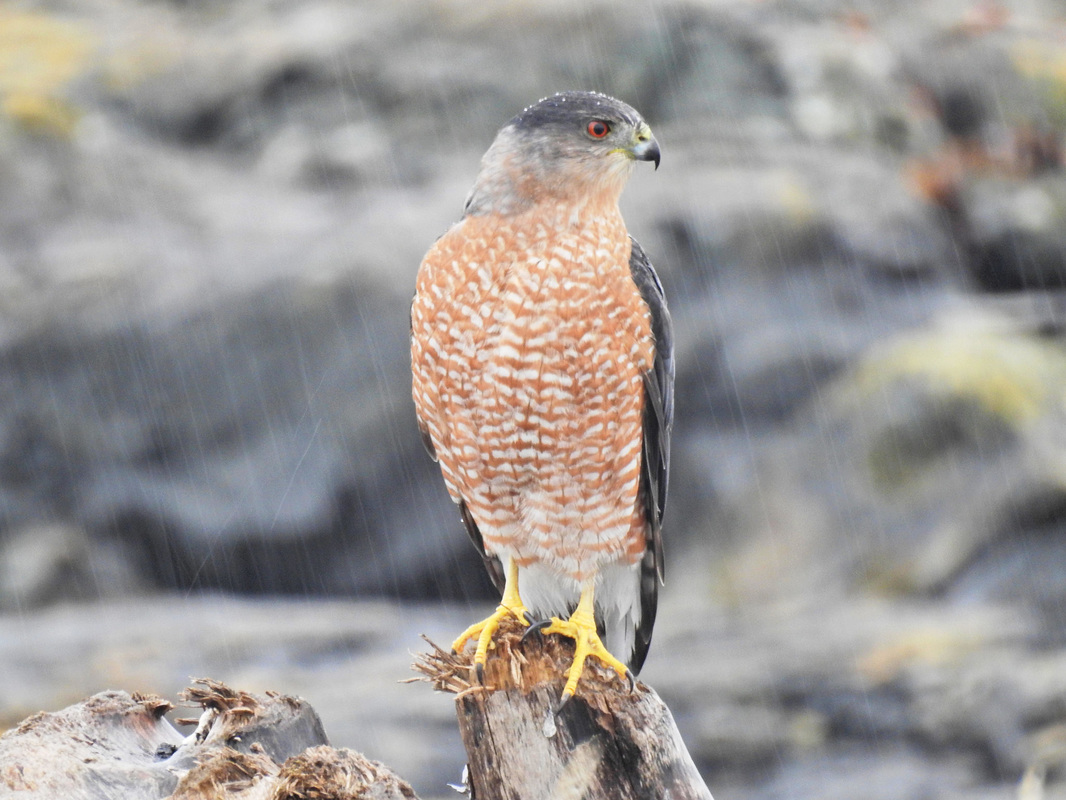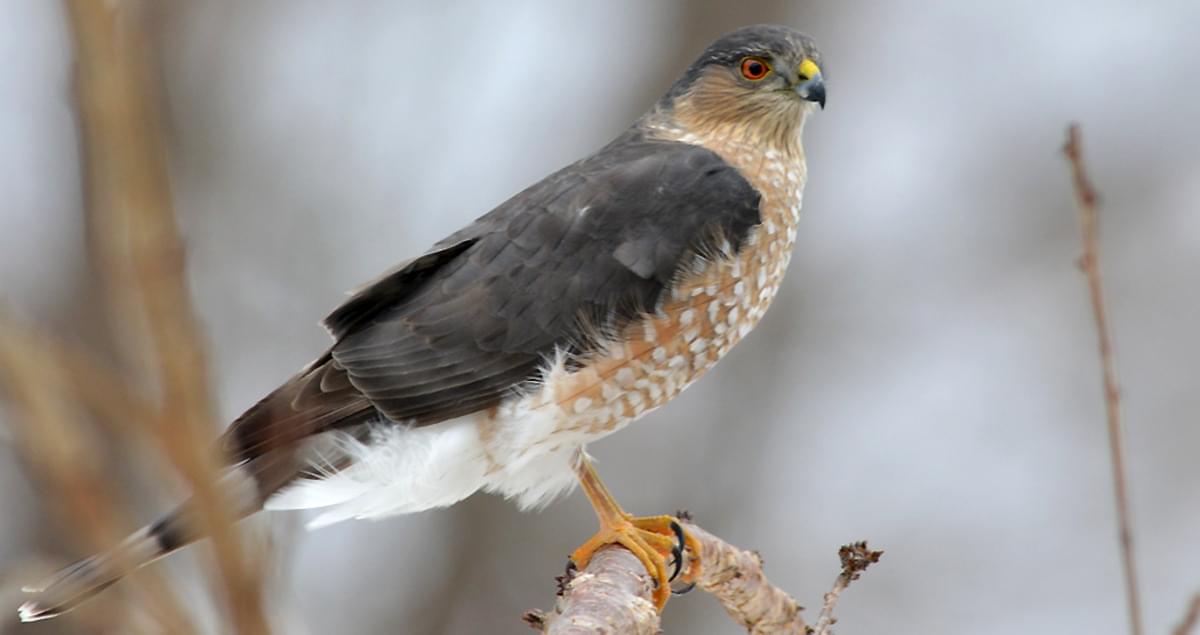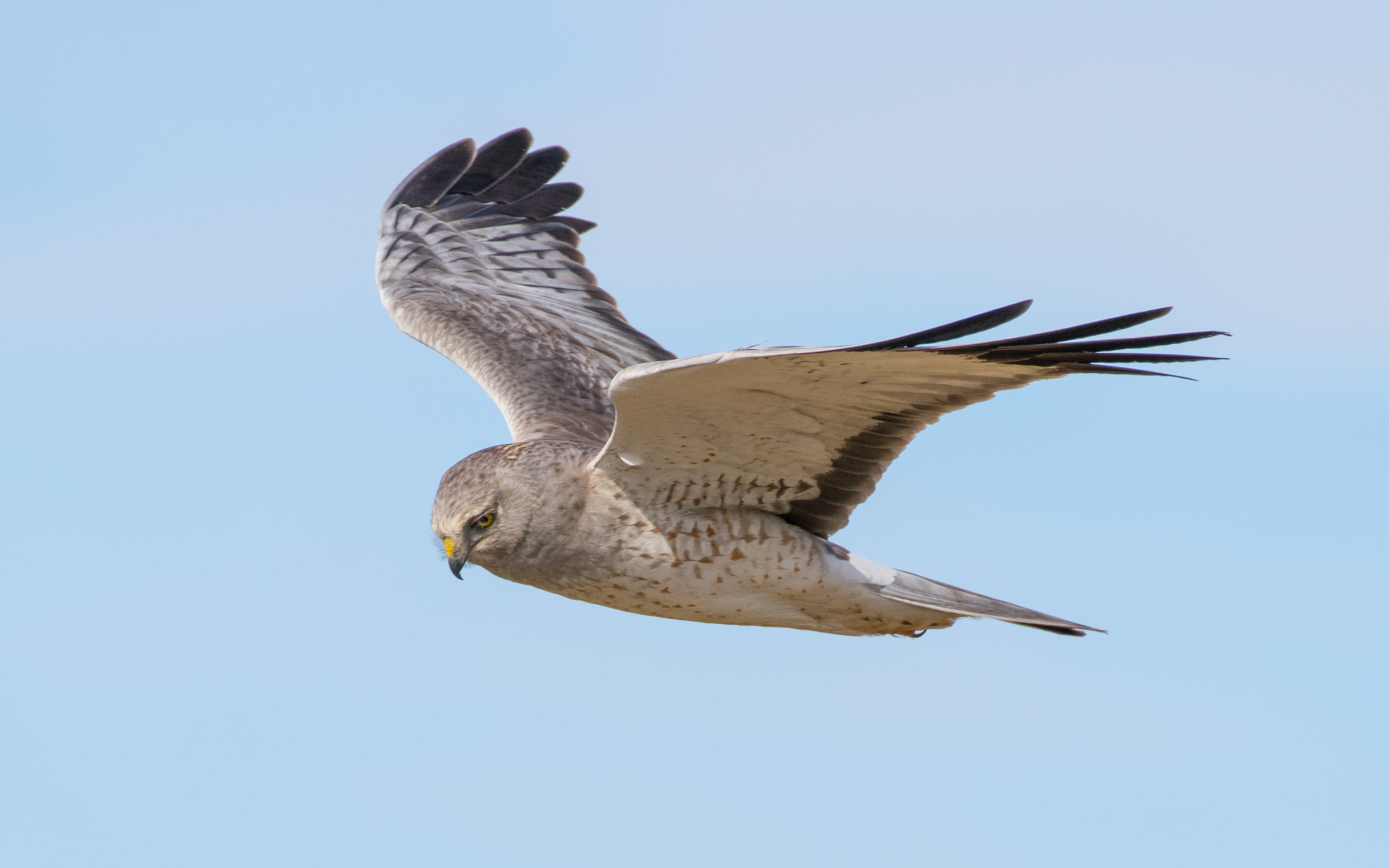Georgia is home to a diverse range of wildlife, including many species of hawks. Hawks are birds of prey that hunt and eat birds, small mammals, snakes, and frogs. There are six species of hawks found in Georgia, each with unique characteristics and behaviors.
In this article, we will explore the different types of hawks found in Georgia and provide pictures to help with identification. Whether you are a bird enthusiast or just curious about the wildlife in Georgia, this article will provide you with valuable information about these majestic birds.
You are reading: 6 Types Of Hawks In Georgia With Pictures

6 Types Of Hawks In Georgia With Pictures
Red-tailed Hawk
The Red-tailed Hawk (Buteo jamaicensis) is a bird of prey that breeds throughout most of North America, from the interior of Alaska and northern Canada to as far south as Panama and the West Indies. It is one of the most common members within the genus of Buteo in North America or worldwide.
Red-tailed Hawks are large hawks with typical Buteo proportions: very broad, rounded wings and a short, wide tail. The Red-tailed Hawk occupies a wide range of habitats and altitudes, including deserts, grasslands, coniferous and deciduous forests, agricultural fields, and urban areas.
The Red-tailed Hawk is one of the largest members of the genus Buteo, typically weighing from 690 to 1,600 g (1.5 to 3.5 lb) and measuring 45–65 cm (18–26 in) in length, with a wingspan from 110–141 cm (3 ft 7 in – 4 ft 8 in).
The species displays sexual dimorphism in size, with females averaging about 25% heavier than males. Red-tailed Hawks are top predators and hunt from perches and from the air. They can spot their prey from 100 feet (30 meters) up in the air and swoop down to grab it in their talons.
Broad-Winged Hawk
The Broad-winged Hawk (Buteo platypterus) is a medium-sized hawk of the genus Buteo. It is a bird of the forest interior and can be hard to see during the nesting season.
Broad-winged Hawks are small, compact raptors with chunky bodies and large heads. In flight, their broad wings come to a distinct point, and the tail is short and square.
The Broad-winged Hawk is a relatively small Buteo, with a body size from 32 to 44 cm (13 to 17 in) in length and weighing 265 to 560 g (9.3 to 19.8 oz). The tail is relatively short, measuring 14.5–19.0 cm (5.7–7.5 in) in length. As in most raptors, females are slightly larger than males.
Broad-winged hawks’ wings are relatively short and broad with a tapered, somewhat pointed appearance. The two types of coloration are a dark morph with fewer white areas and a light morph that is more pale overall.
The Broad-winged Hawk is a migratory bird that breeds in dense forests of the eastern and central U.S. and Canada, and migrates to tropical highlands from southern Mexico to South America each winter.
Red-shouldered Hawk
Read more : Can Birds Eat Oats Soaked In Grease
The Red-shouldered Hawk (Buteo lineatus) is a medium-sized buteo that breeds throughout eastern North America and along the coast of California and northern to northeastern-central Mexico. They are forest raptors that live in bottomland hardwood stands, flooded deciduous swamps, and upland mixed deciduous–conifer forests.
Red-shouldered Hawks tend to live in stands with an open subcanopy, which makes hunting easier. They are not exclusively birds of deep forest, though; one can find Red-shouldered Hawks in some suburban areas where houses or other buildings are mixed into woodlands.
Red-shouldered Hawks search for prey while perched on a treetop or soaring over woodlands. When they sight prey, they kill it by dropping directly onto it from the air. They may cache food near their nest for later consumption. When in clearings, they sometimes fly high and then drop to surprise prey.
Red-shouldered Hawks have very good vision and reasonably good sense of hearing, with talons capable of killing animals as big as their own size. They are noticeably smaller than a Red-tailed Hawk but larger than a Broad-winged Hawk, measuring 43-61 cm (17-24 in) in length and weighing 486-774 g (17.1-27.3 oz).
Red-shouldered Hawks are one of the most distinctively marked common hawks, with barred reddish-peachy underparts and a strongly banded tail.
Cooper’s Hawk
Cooper’s Hawk (Accipiter cooperii) is a medium-sized hawk that is native to the North American continent and found from southern Canada to Mexico. This species is a member of the genus Accipiter, which are famously agile, relatively small hawks common to wooded habitats around the world and also the most diverse of all diurnal raptor genera.
Cooper’s Hawks have moderate-length wings, a long, often rounded tail, and a large head that gives them a distinctive appearance. The male is smaller than the female, and the species was named in 1828 by Charles Lucien Bonaparte in honor of his friend and fellow ornithologist, William Cooper.
Other common names for Cooper’s Hawk include big blue darter, chicken hawk, flying cross, hen hawk, quail hawk, striker, and swift hawk.
Cooper’s Hawks are known for their ability to hunt large and evasive prey using extremely well-developed agility. They are found in mature forests, open woodlands, wood edges, river groves, and increasingly in suburbs and cities where some tall trees exist for nest sites.
The Cooper’s Hawk is larger than a Sharp-shinned Hawk and about crow-sized, but males can be much smaller.
Sharp-shinned Hawk

The Sharp-shinned Hawk (Accipiter striatus) is a small hawk that is native to North America, ranging from southern Canada to Mexico. They are the smallest of the three North American accipiters, or “birdhawks,” and are known for their sharply keeled, featherless lower legs.
Read more : Discover The Top 9 Heaviest Flying Birds Today
Sharp-shinned Hawks are forest birds that are found in pine, fir, and aspen forests, among others, and can be found hunting in forest interior and edges from sea level to near alpine areas.
They are opportunistic hunters that often hunt from a perch and dart out from hiding to catch prey. Their long, sharp talons help them to grab onto prey, and their short bursts of high-speed flight help them to catch their prey.
Sharp-shinned Hawks are protected under the US Migratory Bird Treaty Act and are listed as Appendix II under the Convention on International Trade in Endangered Species (CITES).
Northern Harrier

The Northern Harrier (Circus hudsonius), also known as the marsh hawk or ring-tailed hawk, is a bird of prey that breeds throughout the northern parts of the northern hemisphere in Canada and the northernmost USA. Here are some key facts about the Northern Harrier:
Identification:
– Slender, medium-sized raptor with long, fairly broad wings and a long, rounded tail.
– Flat, owl-like face and a small, sharply hooked bill.
– Males and females have different plumage, with males being gray above and white below, and females being brown above and streaked below.
Habitat and Behavior:
– Found in open country, including grasslands, marshes, and fields.
– Hunts by flying low over fields, scanning the ground for prey.
– Eats mostly small mammals and small birds, but can take larger prey like rabbits and ducks.
– Breeds in the northern parts of the northern hemisphere and migrates south for the winter.
The Northern Harrier is a unique and fascinating bird of prey that is easily identifiable by its distinctive flight style and plumage.
FAQS
1. How many species of hawks are found in Georgia?
There are six species of hawks found in GeorgiRed-shouldered Hawk, Northern Harrier, Red-tailed Hawk, Cooper’s Hawk, Sharp-shinned Hawk, and Broad-winged Hawk.
2. What habitats do these hawks live in?
These hawks can be found in a variety of habitats, including forests, grasslands, marshes, and fields.
3. What do these hawks eat?
These hawks are carnivorous and eat a variety of prey, including small mammals, birds, snakes, and frogs.
4. How can I identify these hawks?
Each species of hawk has unique characteristics that can help with identification. The article provides pictures of each species to help with identification.
5. Are these hawks protected by law?
Yes, many of these hawks are protected under the US Migratory Bird Treaty Act and are listed as Appendix II under the Convention on International Trade in Endangered Species (CITES).
6. When can I see these hawks in Georgia?
These hawks can be seen in Georgia throughout the year, but their migration patterns vary. Some species migrate to Georgia for the winter, while others breed in Georgia during the summer.
Source: https://petstutorial.com
Category: Birds










